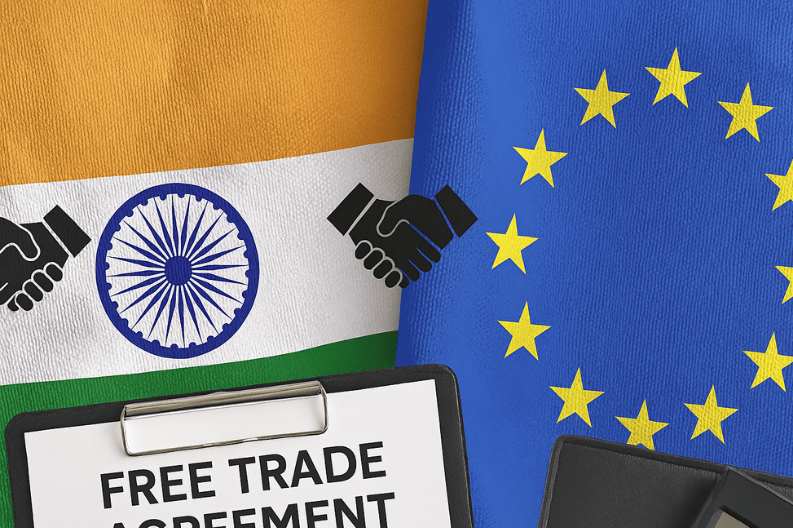New Delhi, September 30: A landmark deal is about to begin as the India trade agreement with EFTA starts on October 1, 2025. The European Free Trade Association (EFTA), which includes Switzerland, Norway, Iceland, and Liechtenstein, has committed $100 billion in investments over the next 15 years. This deal is seen as a game-changer because it combines trade benefits with a strong investment promise.
India signed this agreement, called the Trade and Economic Partnership Agreement (TEPA), in March 2024. The goal is to increase trade between India and these four developed European nations. As part of the deal, Indian consumers will soon get access to high-quality goods such as Swiss watches, chocolates, biscuits, and diamonds at reduced prices.
Over the next 10 years, India will gradually cut customs duties on many products. In return, EFTA will invest $50 billion within the first decade and another $50 billion in the following five years. Officials expect this investment to create nearly one million direct jobs in India. To ensure accountability, the agreement allows India to suspend tariff benefits if the promised investment does not arrive on time.
Commerce and Industry Minister Piyush Goyal confirmed that the TEPA will start from October 1. The pact covers 82.7% of India’s tariff lines, which represents 95.3% of EFTA exports to India. Most of these exports include gold, but dairy products, soya, coal, and other sensitive farm goods are excluded from tariff cuts.
The deal also opens doors for India’s services sector. EFTA nations have offered access across over 120 sub-sectors, covering business, IT, healthcare, auditing, and legal services. This will help Indian companies expand more easily in Europe. Switzerland alone has promised commitments in 128 sub-sectors, while Norway, Iceland, and Liechtenstein have pledged support in more than 100 areas each.
Experts highlight that this deal connects India indirectly to the European Union markets as well. Since Switzerland sends 40% of its services to the EU, Indian exporters can use this as a launchpad. Sectors like green energy, precision machinery, pharmaceuticals, and medical devices are expected to benefit significantly. For example, Norway can share expertise in offshore wind, while Iceland offers strengths in geothermal energy.
So far, India has signed 13 trade agreements, but this is the first with developed nations from the Western Hemisphere. Talks are also ongoing with the EU, the US, Oman, Chile, and New Zealand. Last year, trade between India and EFTA stood at $24.41 billion. However, India had a trade deficit of $20.47 billion, with Switzerland being the largest partner.
Since 2000, India has received $10.87 billion in foreign direct investment from Switzerland. Though investment from other EFTA members remains small. The new deal promises to change this trend with a stronger focus on India’s growing economy.
It is also worth noting that EFTA countries are not part of the European Union. They created their own association to promote free trade, which allows India to balance its relations with both the EU and non-EU European partners.
In conclusion, the India trade agreement with EFTA starts on October 1, 2025, bringing opportunities for investment, growth, and job creation. By reducing trade barriers and opening new service markets, this pact marks a new step in India’s journey toward global economic leadership.



